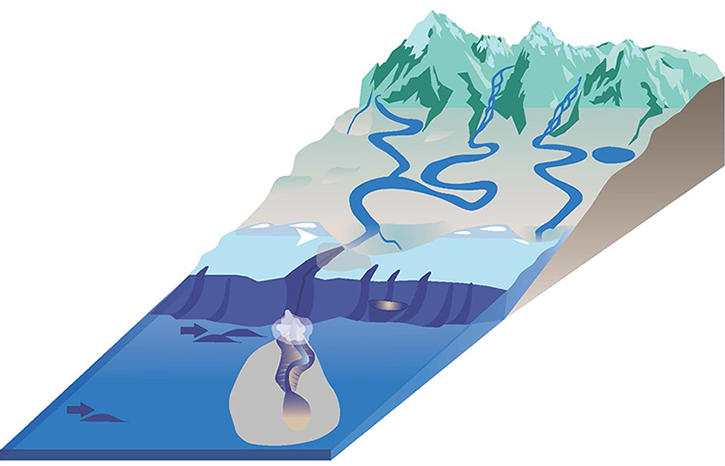Sedimentary Systems
Unveiling Earth Surface Transformations during abrupt Climate Change
The shape of the Earth's surface, both above and below sea level, is influenced by various factors that control how materials such as sediment, organic matter, litter, and pollutants are generated, transported, and deposited. However, these factors are changing rapidly due to Global Change. This has a dramatic impact on the movement of materials, leading to changes in the overall shape of both land and sea.
Unfortunately, we currently have limited knowledge about the extent and speed of these changes, especially in response to abrupt climate shifts happening today. This lack of understanding makes it difficult to predict future changes in the movement of materials from land to the ocean and the resulting changes in the landscape. This information is crucial for adapting to climate change. To address this, we are studying past climate changes and quantifying how they affected the flow of sediment and organic carbon from land to the ocean.

We are using various methods such as
Topographic analyses of the landscape and seascape
- Sedimentary analyses (geochemical, texture, grain size, structures, budgets, depositional patterns, age dating, organic carbon)
- Biomarker- specific compound analyses
- Cosmogenic nuclide analyses
Our goal is a complete understanding of land-to-ocean fluxes and to predict and quantify uncertainties of future Earth Surface topography on the continents and in the ocean.
By doing so, we contribute to the Global Sustainability Goals 13 (Climate Action) and 15 (Life on Land).